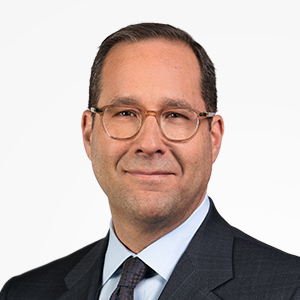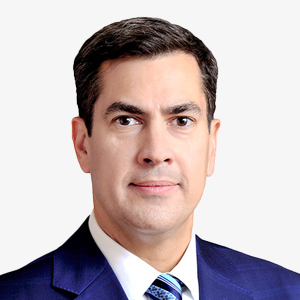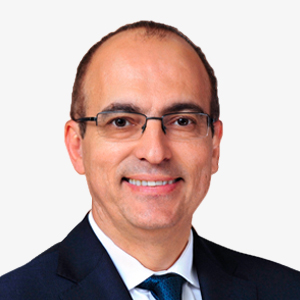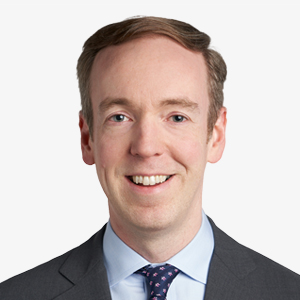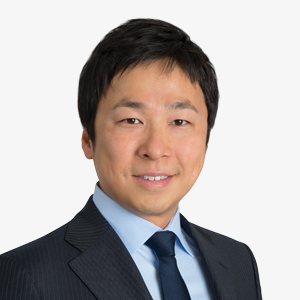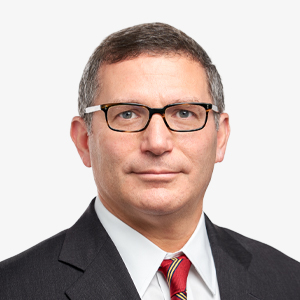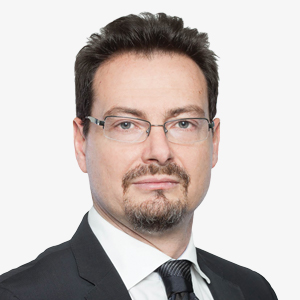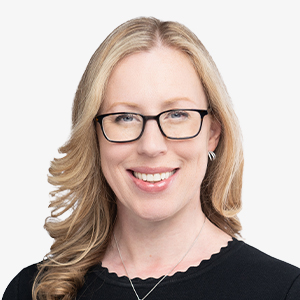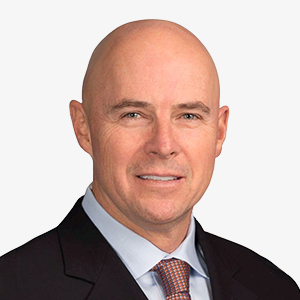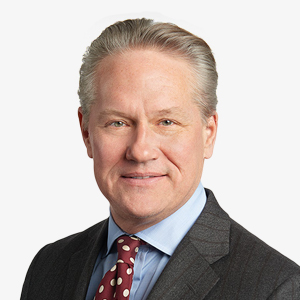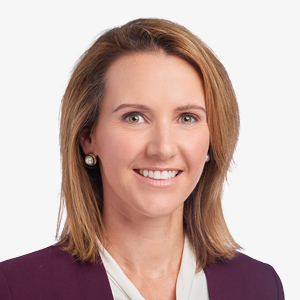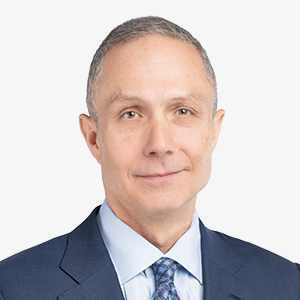Asset Allocation Committee Outlook
—Erik L. Knutzen, CFA, CAIA, Chief Investment Officer—Multi-Asset
The Asset Allocation Committee (“the AAC”) is more positive on the economic outlook than it has been for several quarters. Recession concerns have lifted, and while inflation could remain sticky, we think it is likely to continue to normalize. As investors shift focus from inflation and rates to the growth outlook, market dynamics such as stock-bond correlations have also begun to normalize. Our asset-class views retain their overall balance, which in part reflects this normalizing trend. The reluctance to take a more positive view on risky assets reflects ongoing geopolitical and U.S. election uncertainty, the full valuations in large parts of the market, and the concern that general economic resilience hides growing bifurcation between thriving “haves” and struggling “have-nots.” The resulting balance extends into our view within asset classes. We favor broad equity exposure that encompasses more attractively valued, out-of-favor parts of the market, in anticipation of an end to the recent very narrow leadership in performance. In fixed income, we prioritize quality and income in the belly of the curve, between two and seven years. While we favor credit risk and locking in yield in anticipation of declining cash rates, we are cautious about the uncertainty around longer-term interest rates and debt sustainability. Our only two underweight views, on cash and hedged strategies, emphasize this theme of maintaining equity and fixed income positions to benefit from the current environment. Our overweight views on commodities and private markets reflect ongoing inflation and geopolitical risks and rich opportunities in illiquid assets, respectively.
When the AAC met to review its outlook for the new quarter, the tone was as positive, as it has been since interest rates began to rise more than two years ago. The sentiment was not unanimous, but the majority of Committee members, those that have been expressing a balanced rather than pessimistic economic outlook over recent months, were notably more upbeat.
To a large extent, this was due to a lifting of recession concerns. We have now spent seven months at the peak of the fastest rate-hike cycle in history with little sign of stress in credit markets, job markets or the wider economy. In addition, the AAC noted a growing sense of normalization after four extraordinary years.
Most significantly, inflation has begun to normalize. We still think that core U.S. inflation, currently at 3.8%, could be stuck closer to 3.0% than 2.5% at the end of the year, but the disinflationary trend is more important to us than the level. Similarly, we are not entirely sure that the U.S. Federal Reserve (Fed) will make the three rate cuts that it and the market anticipate for this year, but the overall direction of travel now appears clear (see “Up for Debate: Will the Fed Cut Three Times This Year?”).
These dynamics have allowed market participants to switch their focus away from inflation and rates and onto growth—which continues to be resilient in the face of higher rates. One notable result of this has been a recent reversal of the strong positive correlation between stocks and bonds that has characterized the past two years. There have been sharp adjustments to market expectations for Fed rate cuts in the first quarter of the year. That kind of adjustment would have weighed heavily on both stocks and bonds six, 12 or even 24 months ago, but now appears positive for stocks and negative only for bonds. We think that is because investors focusing on the growth outlook see not only recent economic resilience, but the prospect of persistently higher nominal growth than we have generally experienced since the Global Financial Crisis.
Given this economic outlook, why have the AAC’s headline views remained anchored to neutral?
First, we would regard a balanced overall view, reflecting an investor’s typical long-term asset allocation to stocks, bonds and alternatives, as an appropriate position in response to a normal economic and market backdrop. Some Committee members noted that the AAC’s over- and underweight views on the main asset-class groups have been gradually moderating over the past eight quarters, as we have moved through the current rate-hiking cycle and observed its impact on the broad economy.
Second, the economic outlook may have improved, but large parts of the credit and equity markets are already priced for a soft landing. Despite two years of rate hikes, liquidity remains abundant. The fiscal impulse remains strong in the U.S. and could be set to pick up in Europe. Companies and investors are still sitting on large amounts of cash that could be put to work over the coming months. Those are compelling reasons to remain exposed to risky assets, but they are also among the reasons why rates may yet stay higher for longer than market participants anticipate. When valuations are as full as they are today, they may be sensitive to any shift in market focus back onto inflation and rates. Much rides on a persistence of the new “Goldilocks” outlook.
Third, there is the opposite possibility: a negative development for growth, rather than inflation. Markets could be negatively affected by exogenous factors such as geopolitical and U.S. election uncertainty. We currently think more fundamental economic weakness is less likely, but the AAC does note that the apparent resilience of the broad economy masks diverging fortunes among the thriving “haves” and the struggling “have-nots” (see “Up for Debate: Where Do We See Stress in the System?”).
The balance of all these risks and uncertainties has led the AAC to its current, overall neutral view.
That balance continues into our views within asset classes.
Behind our neutral view on equities overall, we favor the less expensive, less momentum-driven parts of the market. That’s partly due to the valuations themselves, and partly because we think the incipient broadening of market performance beyond groups like the “Magnificent Seven” and Europe’s “GRANOLAS” is likely to continue in the new, normalizing environment.
This is why we still have a slightly more favorable view on (higher-quality) U.S. small- and mid-caps. The AAC is also shifting more decisively in favor of value stocks and becoming more positive on a broader range of non-U.S. equity markets.

The regional view—outside of our more structural bullishness on Japan and India—remains tentative, dependent on a weakening of the U.S. dollar, a continuation of the incipient recovery in the manufacturing cycle and the absence of a meaningful negative growth or inflation surprise.
Japan equities have momentum, but it started from a low valuation base and we have favored this market for some time. During the first quarter of 2024 the Bank of Japan (BoJ), facing above-target inflation, raised rates for the first time in 17 years. It did little to interrupt the equity market’s momentum, for several reasons. Inflows from foreign investors remain strong as they continue to rebalance a longstanding underweight, attracted by low valuations and a structural turn in favor of shareholder value on the part of Japan’s corporate management. The change in monetary policy itself was widely anticipated and the mountain of reserves on which the BoJ pays interest is likely to cap policy rates at around 0.5%, in our view. Moreover, in its own way, it marks Japan as another normalization trade—the difference being that inflation and rates are normalizing upward here rather than downward.
The AAC has tended to be more cautious on Europe over recent quarters, seeing low valuations justified by weakness in its core economies. Some of that pessimism is lifting as we begin to see signs of recovery, powered by declining energy prices, suggestions of more fiscal support, and a rebound in manufacturing and other cyclical parts of the global economy. We await more confirmation of these trends and more evidence of investor rotation out of U.S. equity markets before upgrading our view.

The Committee’s fixed income views are similarly balanced.
Behind our neutral view on investment grade bonds, for example, we favor the middle of the yield curve, between two and seven years. The positive growth outlook and what we regard as the likely decline in near-term interest rates are spurs to have exposure to credit and lock in yield. Significant uncertainty about the term premium makes us much more cautious about the long end of the curve, however; that uncertainty derives from our view on the potential stickiness of inflation, but also from concerns about public debt sustainability.
In credit, spreads continue to grind tighter and volatility continues to grind lower. Technical supply-and-demand dynamics remain the most important determinant of market movements, and there is a lot of cash on the sidelines ready to absorb new corporate issuance. It is difficult to envisage a move to an overweight view on high yield bonds without significant spread-widening, but concerns are not high enough to warrant a shift to the underweight view (See “Up for Debate: Where Do We See Stress in the System?”).
Quality and income are the watchwords, anticipating higher volatility and potentially more attractive opportunities to add risk.
In alternatives, the AAC’s views are little changed from last quarter.
We maintain an overweight view on commodities, and note strong performance in the first quarter, in recognition of ongoing inflation and geopolitical risks, as well as supply-and-demand imbalances in key areas such as energy and industrial metals.
We continue to see opportunity to supply capital and liquidity at attractive valuations in private equity secondaries, especially GP-led secondaries; in co-investments; and via capital solutions such as preferred and convertible stock or notes. Banks are returning to the corporate lending markets, and quality is increasingly becoming a differentiator as higher rates start to bite, but neither trend currently threatens our overweight view on private debt. Our very cautious view on core private real estate is offset by what we see as abundant opportunity in the value-add and opportunistic sectors, and particularly in real estate secondaries.
The downgrade to underweight in our view on hedged strategies has been coming for a few quarters. In an environment of low volatility, an absence of meaningful trends or broad distress, and technical supply-and-demand dynamics dominating fixed income markets, there have simply been fewer opportunities for many strategies. As the AAC’s view on the broad economy improved over the past quarter, leading us to the current position of favoring broad, well-balanced exposure to duration, credit and equity “beta,” the last resistance against an underweight view on low-correlation and market-neutral strategies has fallen away.
The disinflation trend of the second half of 2023 has slowed somewhat during the first quarter of 2024. In response, investors have sharply adjusted their expectations for Fed rate cuts this year, from around six priced in four months ago to barely two today. As the AAC met, new data and commentary from both market participants and policymakers raised questions about whether the Fed would manage the three cuts in its own forecasts.
Some on the AAC are skeptical. They observe that financial conditions remain loose despite the rapid rate hikes of the past two years: corporations, consumers and investors generally hold a lot of cash, while the U.S. housing market, jobs market and wage growth show little sign of weakness. They argue that this is a central pillar of the AAC’s positive view on the economy, but that it must also raise doubts about the prospect of three rate cuts this year.
At the very least, they suggest, three rate cuts this year implies no more in 2025. They point to the recent upward adjustment to the Fed’s own longer-term rate forecast, and suggest there is growing risk of longer-dated U.S. bond yields getting stuck again in the 4.5 – 5.0% range.
The majority view on the Committee, which reflects the view of our Fixed Income team, differs not so much in terms of the inflation outlook as in terms of the Fed’s reaction function.
On the inflation pathway, the base case for the AAC is indeed somewhat higher than current market expectations: we think U.S. core inflation could still be 3% at the end of the year. However, the majority on the Committee think that the Fed would respond quickly to any sign of late-cycle weakness in the jobs markets (see “Up for Debate: Where Do We See Stress in the System?”), but remain steady in its commitment to rate cuts this year in the event of ongoing stickiness in the inflation data.
This view is informed partly by the Fed’s own messaging about following but not overreacting to new inflation data: just as it did not react to lower-than-expected inflation prints at the end of 2023 by cutting early, it will not necessarily react to higher-than-expected prints in 2024 by holding rates at 5.5%. That follows from the pre-pandemic change to the Fed’s policymaking framework, which means it now targets inflation at an average of 2% over the long run rather than a return to 2% as soon as possible. There may not be the substantial economic slowdown required to get inflation down to 2% in the next 12 months, but the flexibility of the new policy framework can allow the Fed to tolerate higher levels for longer, and even cut rates, as long as labor markets are not actually tightening and the trend remains disinflationary.
Overall, that leads us to assume an equilibrium policy rate of 3%, implying 100 – 200 basis points of easing in the coming cycle, while accepting some uncertainty around the timing of those cuts.

The tale of 2023 was one of a recession deferred.
Deferred is not the same as cancelled. Even as economists’ forecasts for global growth in 2023 steadily rose over the course of the year, their forecasts for 2024 and 2025 continued to decline, according to Bloomberg surveys. Coming into 2024 itself, however, cancellation has become the new consensus: growth is still expected to decline from 3% to around 2.7% this year, but the 2024 estimates have started to tick back up as “goldilocks” economic data increasingly points to the potential for a “soft landing” or “no landing.”
Faced with that growing consensus, the AAC looked for stresses and risks in the system that could upset the current trajectory.
One concern is that general economic resilience hides growing bifurcation between the thriving “haves” and the struggling and potentially overleveraged “have-nots.” We see this bifurcation at the consumer and the corporate level, and particularly in real estate.
The Federal Reserve Bank of New York’s surveys of household debt, for example, suggest that while mortgage delinquencies remain low, credit card and auto loan delinquencies have been ticking up meaningfully. That divergence tells a story about the differing fortunes of lower- and middle-income consumers, which we also see in consumer sentiment surveys. The University of Michigan’s survey disaggregates sentiment by income level, for example, and suggests that since the middle of 2023 it has continued to improve among the top and middle third while flatlining among the lower third.
While that might seem unexpected, given jobs-market headlines, underlying trends provide some explanation: while there is jobs growth in most sectors, most of the gains have come in defensive industries that are less sensitive to the broader economy, such as leisure, education and healthcare; cyclical sectors are creating notably fewer vacancies. More than one Committee member wondered if the Fed’s steadfastness on its three cuts for 2024, despite sticky inflation data, was due to policymakers perceiving some underlying or incipient weakness in the labor market.
A similar bifurcation exists between larger, often cash-rich companies and smaller businesses that face a challenging refinancing environment. The NFIB Small Business Optimism Index has dipped notably since the beginning of the year; moreover, respondents have switched the single most important problem they are facing from labor quality to inflation, reinforcing concerns about jobs-market resilience and persistently high rates. Our Fixed Income team noted some recent liability-management exercises among some more leveraged companies, taking advantage of the loose covenants on their debt to the detriment of some lenders—not enough to change our view on credit to an underweight, but enough to reinforce our preference for high-quality issuers.
The picture is clearer in real estate, in our view. As we highlighted in last quarter’s Outlook, there is growing bifurcation between strong, proven operators with resilient balance sheets in sectors that have strong fundamentals, and those with vulnerable balance sheets stranded in sectors on the wrong side of structural trends. We think this is already creating abundant opportunity in the value-add and opportunistic sectors, and particularly in real estate secondaries, but we also believe the sheer size of the challenges facing the real estate sector broadly is likely to make this a multiyear story.
None of these weak points are enough to derail the broader economy, in our view. However, alongside exogenous factors such as geopolitical and U.S. election uncertainty, they are where the AAC is looking for potential downside risks in the months ahead.


- We continue to favor the short and intermediate parts of the yield curve in anticipation of declining cash rates, but remain cautious on longer-dated bonds on debt sustainability concerns.
- Corporate spreads are now quite tight, and we see the most attractive opportunities in securitized credit.
- Yields are relatively attractive, especially in the two- to seven-year part of the curve, but high economic uncertainty in Europe, caution on Japanese government bonds, and on longer-dated bonds in general, inform against moving to a more positive view.
- Our outlook for credit stresses remains mild and idiosyncratic rather than systemic, and we see a case for shorter-duration, high-quality exposure.
- That said, we think investors buying yield have kept spreads tighter, in many cases, than fundamentals warrant.
- Valuations remain relatively high although the potential for U.S. dollar weakness later in the year may enhance our outlook.


- We anticipate further broadening of equity-market performance, which leads us to continue to favor small and medium-sized companies, and a balance between styles.
- We believe momentum in Japanese equities can continue, and that an incipient rebound in manufacturing and other cyclical parts of the global economy could begin to favor Europe over the coming months.
- A cautious outlook on China is balanced by a more favorable view on other emerging markets, including India, where strong growth should remain a tailwind.


- While not as cheap as they were three months ago, commodities remain a useful hedge against inflation spikes, upside growth surprises and geopolitical shocks in 2024.
- We currently prefer broad market exposure to hedged strategies, and also see fewer clear signals in the trending and macro environment.
- Private equity remains attractive as policy rates peak and exit activity looks set to pick up. Secondaries and co-investments are attractive as both Limited Partners and General Partners seek liquidity options to complete deals and increase distributions.
- While signs of a re-opening in the syndicated loan market point to a potential rise in competition for deals over the coming quarters, yields remain attractive and we see ample deal flow.
- Higher interest rates and uncertainty about the office sector is creating value opportunities for liquidity providers in public REITs and private real estate secondaries, and there may be value to come in primary private markets.
- More structurally, we believe post-pandemic growth dynamics will continue to support key sectors such as data centers, warehouses, industrial and multifamily residential.
- The dollar has already shown some weakness over the past two quarters, but the Fed’s relatively dovish response to sticky inflation data so far this year could continue to weigh on the currency.
- Eurozone economic activity remains weak, but the euro remains undervalued based on interest rate differentials and expected growth rates, particularly against other European currencies.
- The JPY still appears very undervalued, especially after the Bank of Japan’s first rate hike in 17 years and the abandonment of yield curve control. The central bank appears unwilling to act aggressively, but as global yields decline the downward trend could reverse, potentially sharply.
- Despite being undervalued and supported by recent economic data coming in better than expected, the GBP can still be weighed down by concerns over the U.K.’s growth and productivity; fiscal space is limited and likely to be used to “buy votes” in an election year.
- Switzerland has a positive current account balance and declining global yields could relieve some carry-trade pressure, but the CHF is still very overvalued; as inflation pressures subside, the Swiss National Bank is likely to withdraw support for the currency, allowing some of this overvaluation to correct.
Joseph V. Amato
Erik L. Knutzen, CFA, CAIA
Ashok Bhatia, CFA
Thanos Bardas, PhD
Joseph V. Amato serves as President of Neuberger Berman Group LLC and Chief Investment Officer of Equities. He is a member of the firm’s Board of Directors and its Audit Committee. His responsibilities also include overseeing the firm’s Fixed Income and hedge fund businesses.
Previously, Joe served as Lehman Brothers’ Global Head of Asset Management and Head of its Neuberger Berman subsidiary, beginning in April 2006. From 1996 through 2006, Joe held senior level positions within Lehman Brothers’ Capital Markets business, serving as Global Head of Equity Research for the majority of that time. Joe joined Lehman Brothers in 1994 as Head of High Yield Research. Prior to joining Lehman Brothers, Joe spent ten years at Kidder Peabody, ultimately as head of High Yield Research.
He received his BS from Georgetown University and is a member of the University’s Board of Directors. He currently serves on the McDonough School of Business Board of Advisors and the Psaros Center for Financial Markets and Policy Board of Advisors. He is Co-Chair of the New York City Board of Advisors of Teach for America, a national non-profit organization focused on public education reform. He is also a Board Member of KIPP NJ, a charter school network based in Newark, NJ, which focuses on educational equity.
Timothy F. Creedon, CFA
Tokufumi Kato, PhD
Hakan Kaya, PhD
David G. Kupperman, PhD
Ugo Lancioni
Shannon L. Saccocia, CFA
Raheel Siddiqui
Robert Surgent
Shannon Saccocia, CFA, is Managing Director and Chief Investment Officer - Wealth for Neuberger Berman. As a member of the firm’s global Asset Allocation Committee, Ms. Saccocia works closely with investment leadership across Neuberger Berman to establish market views, strategic and tactical asset allocation, and portfolio recommendations. She leverages her deep expertise and decades of experience working with individuals, families, financial advisors and small institutions to deliver the firm's comprehensive investment capabilities to Wealth clients. Prior to joining Neuberger Berman in 2023, she was the Chief Investment Officer for five years for SVB Private and Boston Private Wealth, which SVB acquired in July 2021, overseeing portfolio construction, asset allocation, third-party manager selection, equity and fixed income portfolio management, performance and trading. Previously, she held senior roles at Banyan Partners and Silver Bridge Advisors focused on manager selection, asset allocation and portfolio construction.
Shannon received her BA in Economics and History from Brandeis University, and has been awarded both the Chartered Financial Analyst and Certified Investment Management Analyst® designations. Ms. Saccocia is a longtime CNBC contributor and is regularly featured in the financial media. She resides in the Boston area with her husband and two children.
Raheel Siddiqui, Managing Director, Senior Research Analyst, joined the firm in 2004. Raheel is the Senior Investment Strategist in the Neuberger Berman Global Equity Research Department. In this role he researches impending inflection points in the business cycle, risk appetite, inflation, global asset classes, US sectors, style (growth vs. value), and size to enhance fundamental stock selection and portfolio construction processes by taking advantage of emerging trends not fully appreciated by the market. His research spans finding systematic ways of distilling leading or confirming messages from macroeconomic, quantitative, derivatives data, and behavioral data as well as periodically evaluating portfolios for efficient asset allocation.
Prior to this role, Raheel was a part of Lehman Brothers US Equity Strategy Team where he co-authored over 100 strategy reports, many of which were quoted in the Wall Street Journal, Financial Times, and Barron’s. Raheel also worked as a senior member of the Corporate Development team at Monsanto for six years, where he developed industry leading and award winning approach for valuing genomics assets.
Raheel earned MS/BS degrees in Biochemical Engineering from the Indian Institute of Technology and an MBA from Columbia University. Raheel has also been published with the American Institute of Physics.
Accolades referenced are issued by independent third-parties and information regarding specific criteria for accolades is available upon request and generally may be found on such third-party’s website. Barron’s rankings are based on a proprietary formula that considers various factors: assets under management, revenues generated by advisors for their firms, and the quality of the advisors’ practices. Investment performance is not an explicit criterion because performance is often a function of each client’s appetite for risk. Third-party accolades referenced do not reflect the experiences of any Neuberger Berman client and readers should not view such information as representative of any particular client’s experience or assume that they will have a similar investment experience as any previous or existing client. Third-party accolades are not indicative of the past or future performance of any Neuberger Berman product or service.
